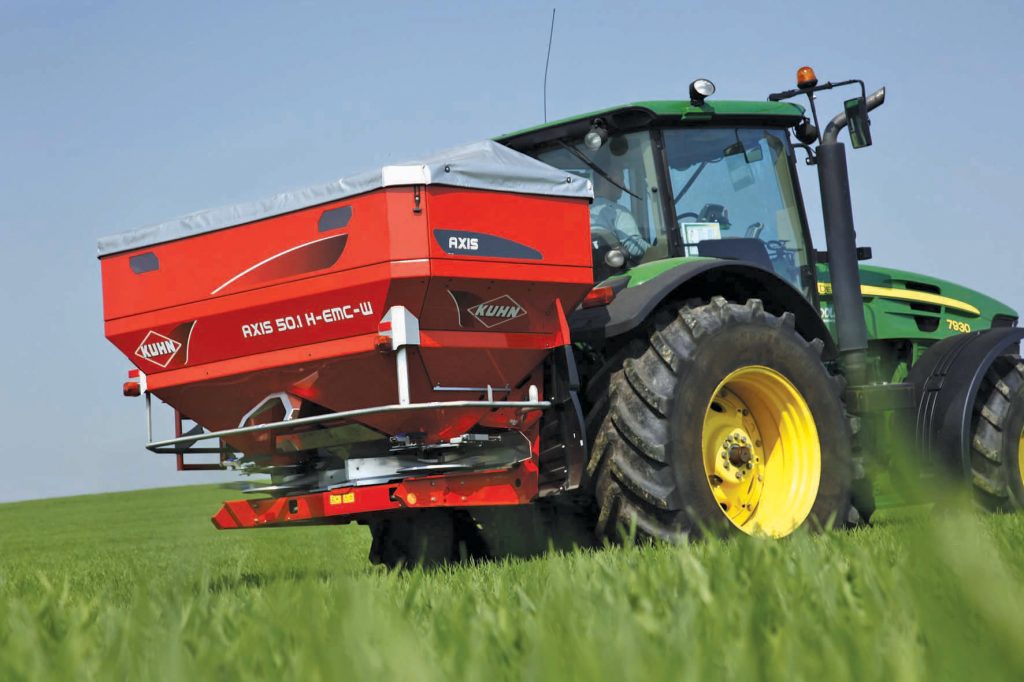Switch to ‘new generation’ fertilisers to reduce costs
23rd May 2017
Livestock producers could get significantly more out of their grassland and save money by moving to ‘new generation’ fertilisers with lower P and K levels and which also add vital

Livestock producers could get significantly more out of their grassland and save money by moving to ‘new generation’ fertilisers with lower P and K levels and which also add vital Sulphur, says independent grassland specialist Dr. George Fisher.
Such an approach could save over £7/acre and give an extra £76/acre beef production or £68/acre in terms of lamb liveweight gain while reducing potential environmental risks considerably and avoiding paying for unnecessary nutrients, he says.
“The industry-standard 20.10.10 fertiliser has been the first choice of many beef and sheep producers for approaching 50 years but things have changed considerably in that period and simply making the traditional choice could now be costing them dearly.
“There are obvious concerns with water soluble phosphate and using more than is necessary, but the truth is in most cases we don’t need to apply as much P as previously because systems have intensified and soil P has built up with manure applications.
“Whilst potash is required to drive Nitrogen uptake, the levels needed are much less than a high K fertiliser will be providing – so paying for these nutrients when they are not required is just a false economy.”
Of far greater concern is Sulphur with mounting evidence that the reduced amount of this vital element falling on grassland following the industrial ‘clean-up’ of recent decades, is affecting both quantity and quality of grassland, he explains.
“It wasn’t that many years ago that every year we would get around 30kg/acre of sulphate deposited from the sky but this has fallen to little more than 2-3kg/acre in recent years.
“This is simply not enough for the plants’ needs, so even on medium to heavy soils Sulphur should produce a significant response and this will be far more valuable to the end user than applying unnecessary levels of P and K.”
A more cost-effective option than traditional 20.10.10 with a better fit nutritionally would be a 24.8.8 (8SO3) true granular compound such as Heartland Sulphur which, for every kg applied, increases the vital Nitrogen and Sulphur content whilst lowering the P and K, he says.
“At current prices, such an approach could save £7.22/acre but you can also expect the addition of the Sulphur to give you an extra 1.5 bales/acre of silage – 10.0 bales rather than 8.5 bales – which is an 18% increase in productivity.
“This would give you enough energy for approximately £76.40/acre increase in liveweight gain at a beef price of £1.90/kg or £68.36/acre in terms of lamb liveweight gain at £1.70/kg.”
According to CF Fertilisers’ Hefin Llwyd, trials carried out by the company support these lifts in production but there are other advantages too.
“We’ve seen addition of Sulphur to optimum levels lifting yields by up to 2.0t dry matter/ha with a corresponding increase in forage crude proteins of 7%, so it is something all grassland farmers need to be aware of.
“The problem is a lot of producers tend to stick with what they’re familiar with but in this case it could be leading to significant reductions in quality and quantity of the most cost-efficient feed they can produce.”
A compound product like Heartland Sulphur at £277 per tonne is more expensive than standard 20.10.10 compound fertiliser at £264 per tonne but it goes further and you actually end up using less per acre while getting better results, he says.
“Even with a 20.10.10 blend at £249 per tonne, the Sulphur product is significantly more cost-effective and spreading is a lot more reliable and nutrient distribution more consistent than with a blend.”
